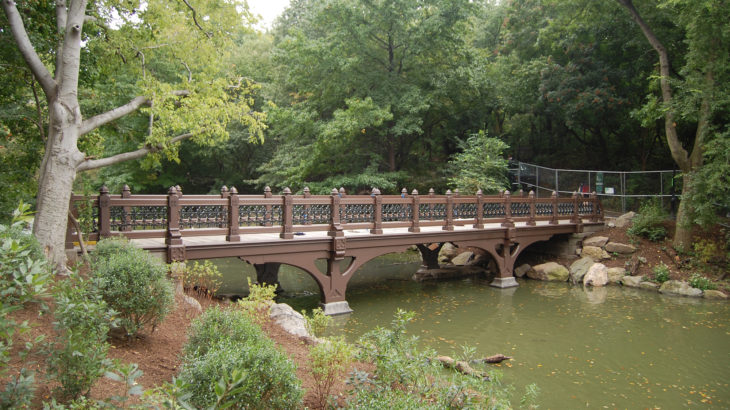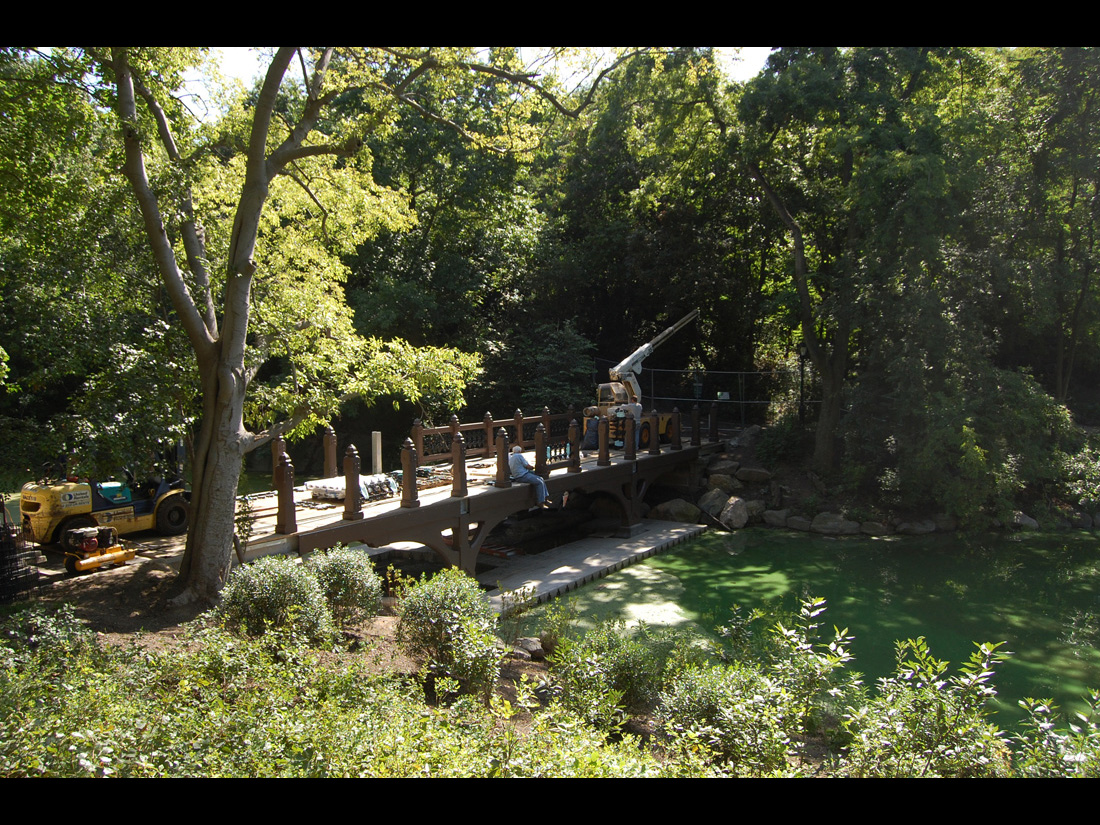The Central Park Conservancy made the decision to replace an existing utilitarian footbridge with a replication of the Oak Bridge, which was first built in 1860 at the same site. The original design of the 75-feet-long, 13-feet-wide bridge would be approximated using more modern, and durable, materials.
The Welding Works team provided a whole package of services for this project, from a preliminary review of the plans and purchasing of materials to problem-solving and installation. Some highlights:
Our team converted the architect’s plans into makeable parts that would last well into the future. Our fabrication work encompassed decorative cast aluminum end posts; decorative cast and welded aluminum balustrade infill panels; decorative cast aluminum balustrade posts; and decorative cast aluminum medallions. Our goal was to ensure that all individual parts and sections would fit together properly.
Welding Works worked closely with our pattern maker to generate patterns for the large number of castings that the project required. This was particularly challenging because many of the castings would function as cosmetic cladding to cover I-beams, and each cover had to have a left and right pattern that fit together seamlessly.
We helped to create a fastening system that resembled the original one. Since the new bridge had to look like it was built in the 19th century, metal fasteners and brackets could not be visible. The hidden fastener system that was devised included cast aluminum hanging brackets.
A mock-up was assembled at our Madison, CT facility. One complete section of the bridge, consisting of a steel I-beam and its corresponding aluminum covers and grills, was completely put together for evaluation.
All aluminum castings were powder coated before the bridge was assembled. A brown coating with a bit of texture was used to simulate wood. The decorative panels between the vertical posts were coated with black to resemble wrought iron.
All handrails, castings and customer-supplied wood decking were assembled on-site. Once assembly began, field conditions required some creative fitting of sections of the bridge. The aluminum material had some degree of “give,” allowing these adjustments while maintaining the integrity of the structure.

